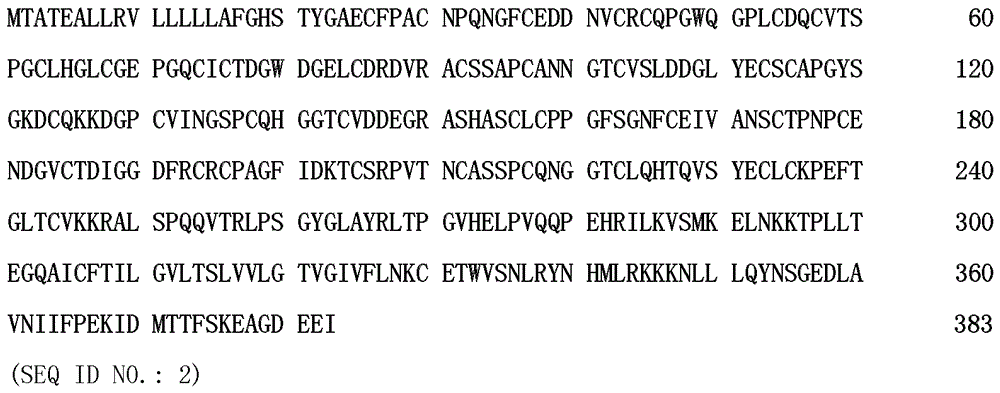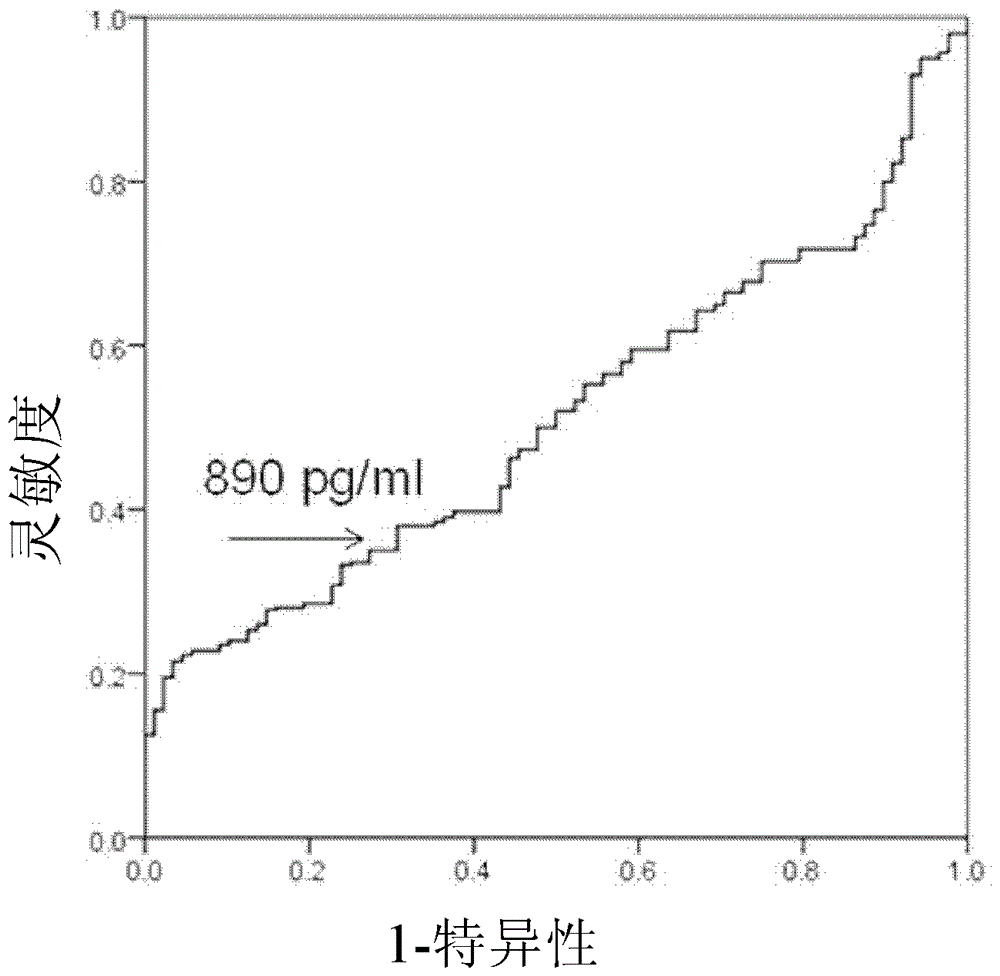Application of dlk1 in the diagnosis and prognosis of liver cancer
A liver cancer prognosis and application technology, applied in the field of oncology and diagnosis, can solve the lack of serum markers and other problems
- Summary
- Abstract
- Description
- Claims
- Application Information
AI Technical Summary
Problems solved by technology
Method used
Image
Examples
Embodiment 1
[0105] Serum DLK1 protein concentration was significantly elevated in patients with liver cancer
[0106] In this example, the concentration of DLK1 in the serum of 400 cases of liver cancer patients and 88 cases of healthy control group was detected by ELISA method.
[0107] The results showed that the concentration of DLK1 in HCC serum was 2378.6±337.5pg / ml (mean±SD); the concentration of DLK1 in healthy control group serum was 685.4±38.9pg / ml (mean±SD); The concentration of DLK1 was significantly higher than that of the healthy control group (P figure 2 ).
[0108] Therefore, if the concentration of DLK1 in the serum of the detected subject is ≥1000 pg / ml (more preferably ≥2000 pg / ml), it indicates that the probability of the subject suffering from liver cancer is significantly higher than that of the normal population.
Embodiment 2
[0110] The relationship between serum DLK1 concentration and various clinical indicators
[0111] In order to further explore the relationship between serum DLK1 concentration and various clinical indicators, according to the ROC curve ( image 3 ) set the cut-off value (threshold) of DLK1 as 890pg / ml, its sensitivity and specificity were 33.2% and 75.0% respectively, and the positive rate was about 22% (29 / 132). The clinicopathological indicators included in the statistical analysis mainly include patient gender, age, serum alpha-fetoprotein, hepatitis B virus surface antigen, tumor size, Edmondson histological grade, intrahepatic metastasis and associated liver cirrhosis.
[0112] Statistical analysis results showed that serum DLK1 concentration was closely related to Edmondson histological grade and tumor size in patients with liver cancer (Table 1).
[0113] Table 1. Correlation analysis between serum DLK1 concentration and clinicopathological indicators in patients with ...
Embodiment 3
[0117] Serum DLK1 concentration is closely related to survival of patients with liver cancer
[0118] In this example, the survival of DLK1-positive and DLK1-negative liver cancer patients was analyzed with 890 pg / ml as the cut-off value.
[0119] The results showed that the survival time of DLK1-negative HCC patients was significantly longer than that of DLK1-positive patients ( Figure 4 ) (P=0.033). Among them, there were 91 patients with DLK1-negative liver cancer, with a median survival time of 902 days; and 27 patients with DLK1-positive liver cancer, with a median survival period of 596 days).
[0120] The above results indicated that the serum DLK1 concentration is suitable as a serum marker for the detection and judgment of the prognosis of liver cancer.
PUM
 Login to View More
Login to View More Abstract
Description
Claims
Application Information
 Login to View More
Login to View More - R&D
- Intellectual Property
- Life Sciences
- Materials
- Tech Scout
- Unparalleled Data Quality
- Higher Quality Content
- 60% Fewer Hallucinations
Browse by: Latest US Patents, China's latest patents, Technical Efficacy Thesaurus, Application Domain, Technology Topic, Popular Technical Reports.
© 2025 PatSnap. All rights reserved.Legal|Privacy policy|Modern Slavery Act Transparency Statement|Sitemap|About US| Contact US: help@patsnap.com



